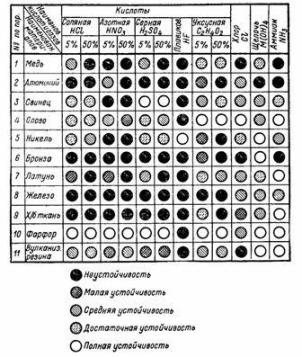Selection of the method of laying wires and cables
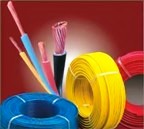 The choice of method of implementation of the power supply network is influenced by:
The choice of method of implementation of the power supply network is influenced by:
a) environmental conditions,
b) the place of laying the net,
c) the adopted network diagram, the length of its individual sections and project sections.
The results of environmental influence can be:
a) destruction of the insulation of wires, the conductive material itself and any protective coverings and fasteners,
b) increased danger for persons servicing the electrical network or accidentally coming into contact with it,
c) occurrence of fire or explosion.
Destruction of conductor insulation and damage to metal current-carrying and structural parts can occur as a result of exposure to moisture, corrosive vapors and gases, as well as high temperatures.
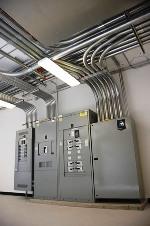
Finally, the atmosphere in the room may contain such impurities that if arcing or high temperatures occur in the elements of an electrical installation, they may ignite or explode.
The place of laying (route) of the net affects the choice of the type and method of laying, mainly according to the conditions of the mechanical protection of the net, its safety when touching and the ease of installation and operation.
Depending on the height of the installation, the following requirements are imposed on the network:
a) at a laying height below 2.0 m above the floor — reliable protection against mechanical damage,
b) with a laying height below 3.5 m above the floor and 2.5 m above the upper deck of the crane - safety when touched.
The influence of the adopted network scheme on the choice of the method of its implementation is clearly seen on the example of highways with a distributed load, for which the use of buses is recommended.
The length and cross-section of the individual lines have an impact when, for example, the question of using cables or wires in steel pipes is decided. The first is preferred for network sections with large cross-sections and length, the second for small ones.
Table 1. Effect of acids and gases on materials used in electrical equipment
Below are general guidelines for choosing the method of network implementation, depending on the characteristics of the premises in relation to the environment, drawn up in accordance with PUE… It is considered that:
a) bare wire has no insulating or protective covering,
b) a bare shielded wire has a coil or braid of fibrous substances or another coating (enamel, varnish, paint) that protects the metal core of the wire from the effects of the environment,
c) in the case of an insulated conductor, metal cores are enclosed in an insulating sheath,
d) in the case of an insulated bare wire, the insulation is not protected from mechanical damage by special sheaths,
e) an insulated protective conductor has a metal or other covering over the electrical insulation to protect it from mechanical damage.
underlay wires and cables in dry rooms
Open Wiring:
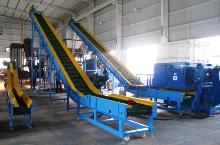
b) directly on combustible structures and surfaces — insulated unprotected wires on rolls and insulators, in pipes (insulating with a metal sheath, steel), boxes, flexible metal sleeves, as well as cables and protected insulated wires,
c) at voltages up to 1000 V — with pipelines of all versions,
d) at voltages above 1000 V — from conductors in a closed or dustproof design.
Hidden wiring:
e) insulated unprotected conductors in pipes (insulating, insulating with a metal sheath, steel), blind boxes, closed ducts of construction structures of buildings, as well as special conductors.
underlay wires and cables in wet rooms
Open Wiring:
a) directly on non-flammable and non-combustible structures and surfaces - with insulated unprotected wires on rolls and insulators, in steel pipes and boxes, as well as cables protected with insulated and special wires,
b) directly on combustible structures and surfaces — with insulated unprotected wires on rolls and insulators, in steel pipes and channels, as well as cables and protected insulated wires,
c) at any voltage - water supply pipes,
Hidden wiring:
d) insulated unprotected conductors in pipes (insulation moisture-resistant, steel), as well as special conductors.
underlay wires and cables in damp and particularly damp rooms
Open Wiring:
a) directly on non-flammable and combustible structures and surfaces — with insulated unprotected wires on rolls for wet places and insulators, in steel gas pipes, as well as cables,
b) at any voltage - water supply pipes,
Hidden wiring:
c) insulated unprotected conductors in pipes (insulating moisture-proof, steel gas pipeline).
underlay wires and cables in hot rooms
Open Wiring:
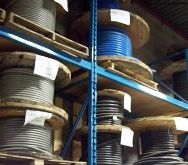
b) at voltages up to 1000 V — with pipelines of all versions,
c) at voltages above 1000 V — with wires in a closed or dust-proof design,
Hidden wiring:
d) insulated unprotected conductors in pipes (insulating, insulating with metal sheath, steel).
underlay wires and cables in dusty rooms
Open Wiring:
a) directly on non-flammable and non-combustible structures and surfaces - with insulated unprotected wires on insulators, in pipes (insulating with a metal shell, steel), boxes, as well as cables and protected insulated wires,
b) directly on combustible structures and surfaces — with insulated unprotected wires in steel pipes, boxes, as well as cables and protected insulated wires,
Hidden wiring:
d) insulated unprotected conductors in pipes (insulating, insulating with a metal sheath, steel), boxes, as well as special conductors.
underlay wires and cables in rooms with a chemically active environment
Open Wiring:
a) directly on non-flammable and hard-to-burn structures and surfaces - with insulated unprotected wires on insulators, in steel gas pipelines, as well as cables,
b) directly on non-flammable and non-combustible structures and surfaces - bare protective conductor on insulators,
Hidden wiring:
c) insulated unprotected conductors in steel gas supply and insulation pipes.
underlay wires and cables in fire-hazardous rooms of all classes
Open Wiring:
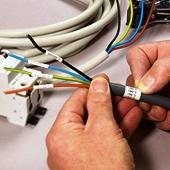 a) on any base, with the exception of wooden uncoated walls and supports (ceiling or roof) — with unprotected conductors with insulation up to 500 V on insulators with a voltage in the network relative to the ground does not exceed 250 V. In this case, the conductors must be removed from the places of accumulation of combustible materials and should not be subjected to mechanical stress in their place,
a) on any base, with the exception of wooden uncoated walls and supports (ceiling or roof) — with unprotected conductors with insulation up to 500 V on insulators with a voltage in the network relative to the ground does not exceed 250 V. In this case, the conductors must be removed from the places of accumulation of combustible materials and should not be subjected to mechanical stress in their place,
b) on any basis — with unprotected conductors with insulation up to 500 V in steel gas pipes, as well as armored cables,
c) on any basis in dry rooms without dust, as well as in dusty rooms where dust in the presence of moisture does not form compounds that have a destructive effect on the metal sheath, insulated unprotected conductors with insulation up to 500 V in pipes with a thin metal sheath .At the same time, in places where electrical wiring is subjected to mechanical stress, protective coatings must be placed (gas pipes, channels, corners, etc.),
d) on any basis — unarmored cables with rubber or PVC insulation in a lead or PVC sheath, in places where electrical wires are subjected to mechanical stress, the cables must have protective coatings,
e) closed busbars and in rooms of classes P-I and P-II, the casings must be dustproof, and in the rest - of a normal design, but with holes with a diameter of no more than 6 mm, the permanent connections of the busbars must be made by welding or pressing, and the bolted current-carrying connections must have devices against self-protective unscrewing,
Hidden wiring:
f) insulated conductors of the PRTO brand in steel gas pipelines. In fire-hazardous rooms of all classes, it is allowed to use wires and cables with aluminum conductors, provided that their connections and terminations are made by welding or soldering.

